This time, I would like to discuss the 1959 and 1960 Stratocasters. In 1959, there was a significant change that was as important as the body material itself: the change in the fingerboard material. The fingerboard and neck are critical components that determine the sound of a guitar.
Why? Because if you compare the length of the strings from the head to the bridge saddle and from the neck joint to the body endpin, the portion from the head to the bridge saddle plays a significantly larger role in the string’s length.
1As previously mentioned in earlier articles or photos, the cover of the 1959 Fender catalog featured a close-up of the Jazzmaster. The neck with a rosewood fingerboard dominated the cover, which was the beginning of the shift. The Jazzmaster adopted the rosewood fingerboard before the Stratocaster and gradually gained popularity. Users started calling for a change to the Stratocaster as well, saying, “It’s about time for a specification change!”
Thus, the slab-board Stratocaster was born. Even in modern music scenes, it’s considered one of the strongest Strats.
In the late 1950s, the reason for the change from a maple one-piece fingerboard to a slab fingerboard was twofold:
First, it was said that the maple fingerboards were prone to wear and dirt. While, in modern times, it’s fashionable to deliberately wear and age instruments...
Second, there was growing sentiment that rosewood fingerboards had a more luxurious feel. Indeed, the combination of a brown-to-dark rosewood fingerboard (as seen below) and a 3 Tone Sunburst is a stylish combination. The contrast of red and black is energetic and beautiful. I believe gold parts would also complement it well.
Generally, Telecasters are more popular with maple fingerboards, while Stratocasters tend to be more popular with rosewood fingerboards. Legendary guitarists who used slab fingerboards include Jeff Beck and Rory Gallagher. The worn-down Strat of Rory Gallagher, particularly from the 1990s onward, left a lasting impression.
In late 1959, Fender transitioned from the one-piece maple fingerboard to the slab fingerboard. The term slab means thick.
The sound is truly rocking!!
With crunchy riffs, mellow melodies filled with human emotion, and ringing open strings. It’s everything good about a Strat.
Additionally, a steel spacer is inserted into the tension pin screw of the headstock. This may be because the neck carving has changed? From a visual perspective, it seems the tension is weaker than the original design.
The number of screws securing the pickguard in the electronic system changed from 8 to 11, with occasional 10-screw versions.
The pickguard, famously known as the Mint Green pickguard, remains popular today. This also contributed to the rise in popularity of rosewood fingerboards. The combination of the brown body and the pale green pickguard is subtle and exquisite.
So why was the popular pickguard discontinued? I will discuss that in the next installment.
The tremolo spring cover has no material change and remains free from discoloration.
From late 1959 onwards, to address noise, the back of the pickguard was fully shielded. Prior to that, there was minimal shielding around the control area. The control cavity was updated to an 11-point screw setup, and a protrusion of alder body material is seen in the cavity to accommodate the fifth screw from the bottom right.
The capacitors are without potting and appear fresh with blue and white colors. Because of its aesthetic popularity, replicas of these are still available. The capacitors from the 1954 models ceased in 1960 and were replaced with thin, round, dull red ceramic capacitors.
The fingerboard is Brazilian rosewood, known for its dense, explosive qualities, commonly referred to as Jacaranda. Today, international trade of this wood is banned under the Washington Convention, and, like tortoiseshell, it is “basically impossible to acquire.”
Since the truss rod is installed from the fingerboard side, the neck lacks a skunk stripe, though skunk stripe versions do exist.
From the front, you can see the fingerboard is adhered in a kamaboko (fishcake) shape at the nut area. This is a clear distinction between the slab fingerboard and later round fingerboard models. It’s easy to identify the production year by this feature.
The truss rod installation was also modified to the front, and the brown eggshell (which was previously common) is no longer seen.
The basic color is 3 Tone Sunburst. The early red paint on the body would fade almost entirely under sunlight. Fender used to paint various alder woods on the roof and exposed them to sunlight to address this issue.
In 1961, they switched to a paint that wouldn’t fade. Nowadays, rosewood fingerboards and 3 Tone Sunburst finishes are more popular than maple and 2 Tone Sunbursts.
The body weight isn’t particularly heavy, and it truly represents a mature Stratocaster.
The contour is neither too shallow nor too deep. It was probably easier to process than ash, achieving its intended goal. For regular use, there would be no issues with playability.
If Leo Fender, Don Randall (president of Fender Sales), and Forrest White (who managed office tasks) were still alive today, these three would certainly have been able to renew the company and address its flaws.
Lately, Fender Custom Shop guitars have become extremely expensive! Too expensive. Leo’s belief in “making guitars affordable for everyone, guaranteeing good sound, and easy maintenance” seems absent today.
However, Don Randall and Leo were always in conflict. Forrest White often found himself in the middle, struggling. If it weren’t for Forrest, there might never have been the first Stratocaster order...
Had Don and Forrest not been involved with Leo, Fender might not have become the large company it is today.
Forrest White’s role included office work, phone responses, and employee training. He was truly the backbone of Fender.
Fender was a ‘miraculous company’ with many unique and talented people. Even after leaving Fender, Forrest remained active in the music industry.
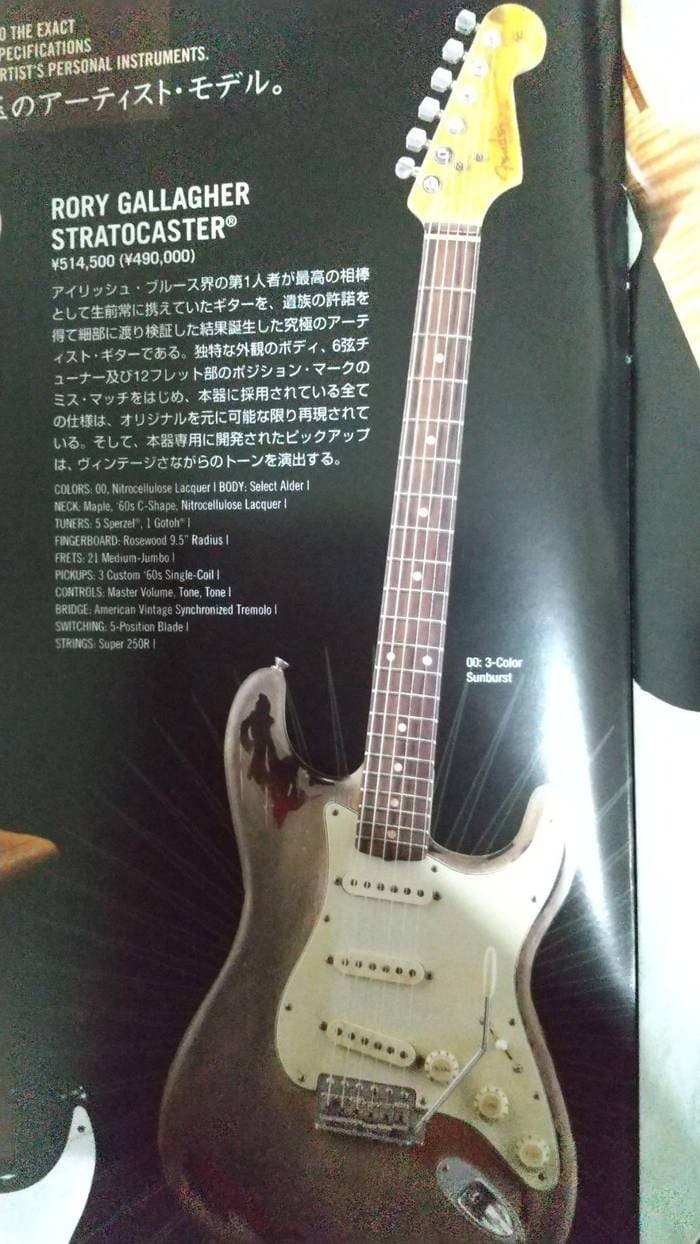
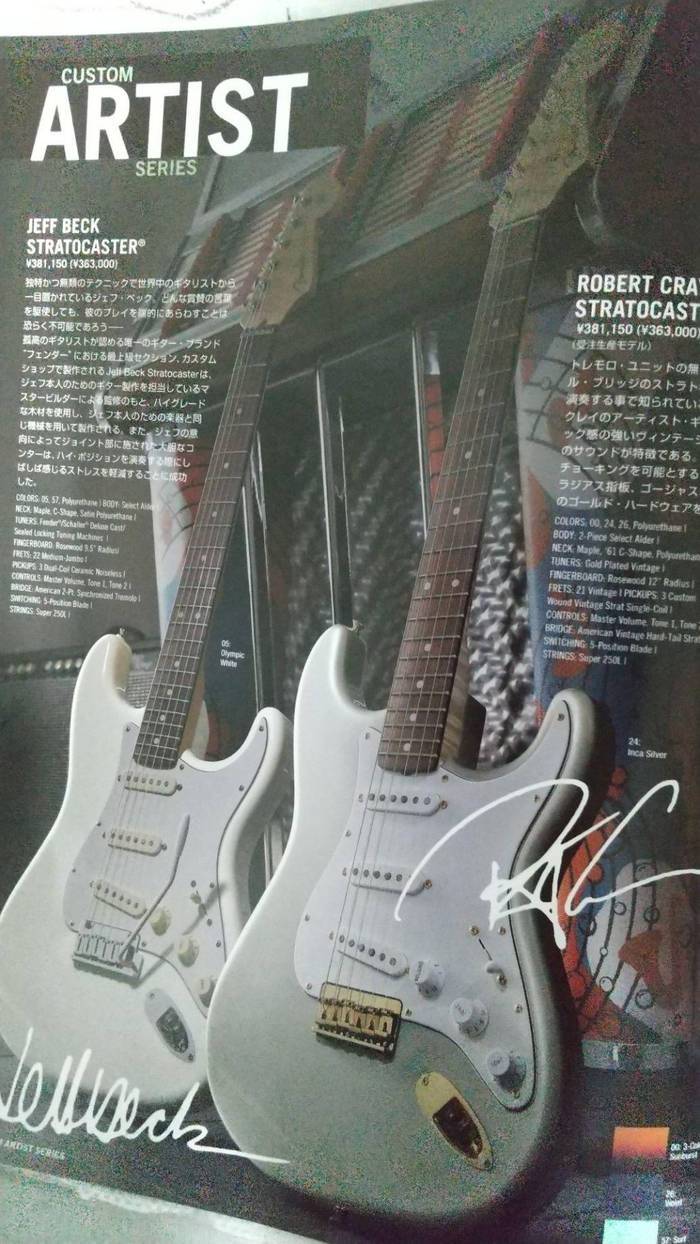
Images: From the 2007 Fender Custom Shop catalog
Both images are too famous for commentary, but for those seeing them for the first time, I’ll provide an explanation:
This guitar from Jeff Beck differs from a standard Strat in two ways: The synchronized tremolo is two-point, making it easier to keep pitch stability compared to the original. Beck controls his arm movement with his right hand while playing. The arm length is shorter, similar to the original 50s model.
The other difference is that the nut is made of metal, rather than plastic or bone. This smoothens the string movement and reduces friction.
There is an amazing video of Jeff Beck playing this Strat at the 2008 Ronnie Scott’s live performance. No one else uses the Strat like Jeff does. The camera work is fantastic, showing detailed close-ups of his hands — it’s truly mesmerizing footage.
Had Leo Fender still been alive, he may have become a fan of Jeff Beck. As Jeff ages, his guitar skills only become more miraculous.
Also, Leo, as mentioned before, likely did not enjoy Jimi Hendrix’s playing, especially his use of the tremolo arm. As people get older, they tend to resist new things, so Leo’s musical tastes might have had limits.
The other Strat with a slab fingerboard was Rory Gallagher’s beloved guitar.
Compared to its final paintwork, it’s clear how much Rory played it. It wasn’t damaged from rough handling but was reportedly stolen and found in a park after being exposed to the rain. I overheard this story in a music store many years ago—though I wonder if it’s true?
Next time, I will discuss the mature Stratocaster and its subsequent transition to round fingerboards. I’ll also explain why the mint green pickguard was discontinued and other specification changes.
The “sound & person” column is made up of contributions from you.
For details about contributing, click here.











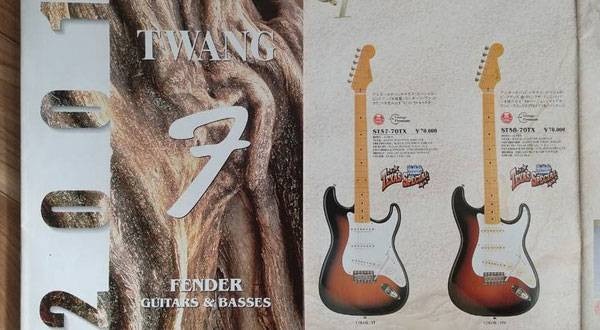
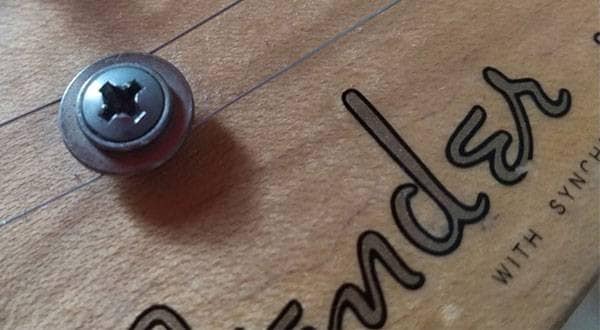
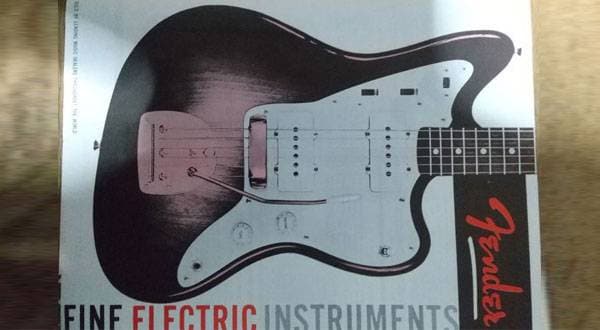
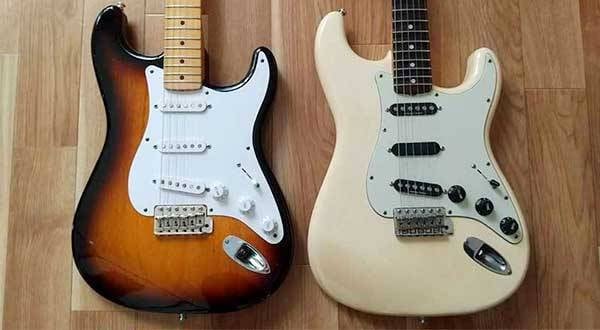
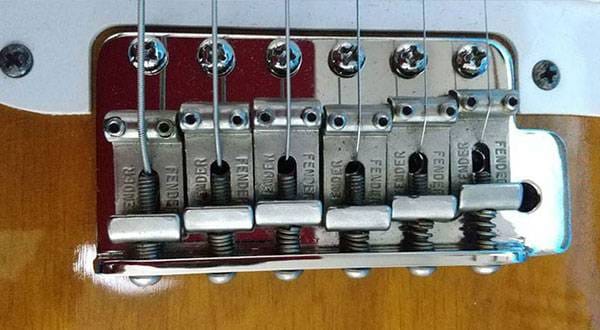

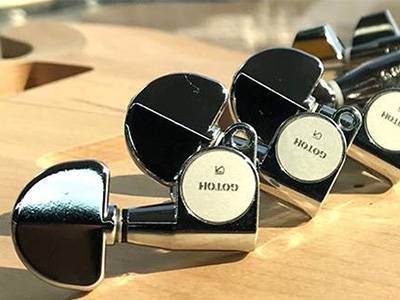 GOTOH(ゴトー)ギター用ペグ よくある質問まとめ!
GOTOH(ゴトー)ギター用ペグ よくある質問まとめ!
 Fender プロダクトラインナップ
Fender プロダクトラインナップ
 FENDER(フェンダー)ブランドサイト
FENDER(フェンダー)ブランドサイト
 ギター 初心者講座
ギター 初心者講座
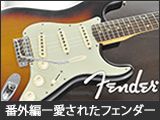 愛されたフェンダーギターたち
愛されたフェンダーギターたち
 ギター名人ラボ
ギター名人ラボ















